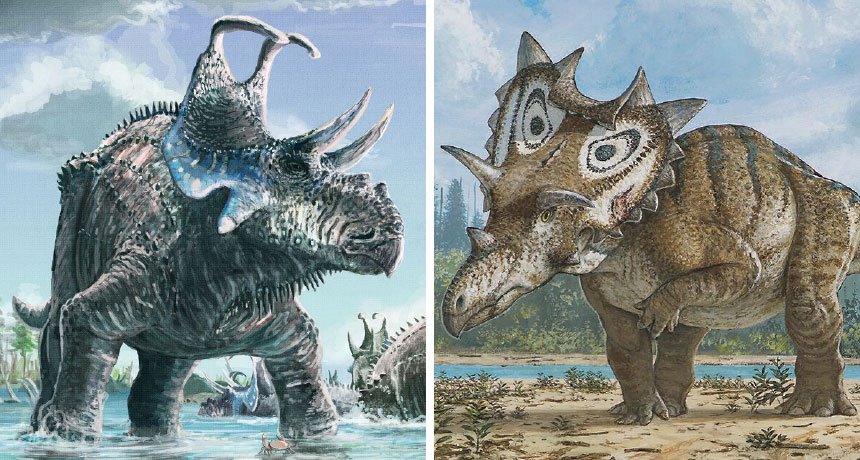Grooves, spiky shield not previously seen in Triceratops relatives

DOUBLE TROUBLE Researchers have discovered two new species of dinosaurs with unusual horns.
Two newly discovered Triceratops relatives sported some peculiar headgear.

Researchers uncovered skull fragments of Machairoceratops cronusi in 77-million-year-old mudstone from the Wahweap Formation in southern Utah. Unlike other horned dinosaurs, the roughly 8-meter-long M. cronusi had two grooved horns with spatula-like tips bowed forward from the back of its neck shield. The grooves’ function baffles researchers.

A different research team found a younger cousin of M. cronusi in Montana’s Judith River Formation. Spiclypeus shipporum lived about 76 million years ago and had distinct brow horns that protruded sideways from its skull along with unusual spikes on its neck shield — some pointing outward, others bent forward. S. shipporum’s distinct horns and spikes may have allowed individuals of the species to recognize one another, says Jordan Mallon, a paleobiologist involved in the research at the Canadian Museum of Nature in Ottawa.

The new finds add to the diversity among the herbivorous horned dinosaurs that roamed North America during the Late Cretaceous period. “We thought we knew most things [about horned dinosaurs],” says Eric Lund, a paleontologist at Ohio University in Athens who analyzed M. cronusi. “But we’ve just scratched the surface.”
